The Final Justice: The men who met their end at Shepton Mallet Prison
By Laura Linham 28th Dec 2023
By Laura Linham 28th Dec 2023

Shepton Mallet Prison's towering walls have been a foreboding presence in the town for centuries, imprisoning some of Britain's most notorious criminals, including the infamous Kray twins.
Within these walls, the prison has witnessed not only the incarceration of the country's most heinous offenders but also the execution of several individuals, leaving a shadow of stories that continue to chill those who delve into the past.
The place of execution for Somerset from 1889, Shepton Mallet Prison has seen seven recorded judicial hangings between 1889 and 1926, with the grim possibility that more unrecorded executions lie in its hidden history.
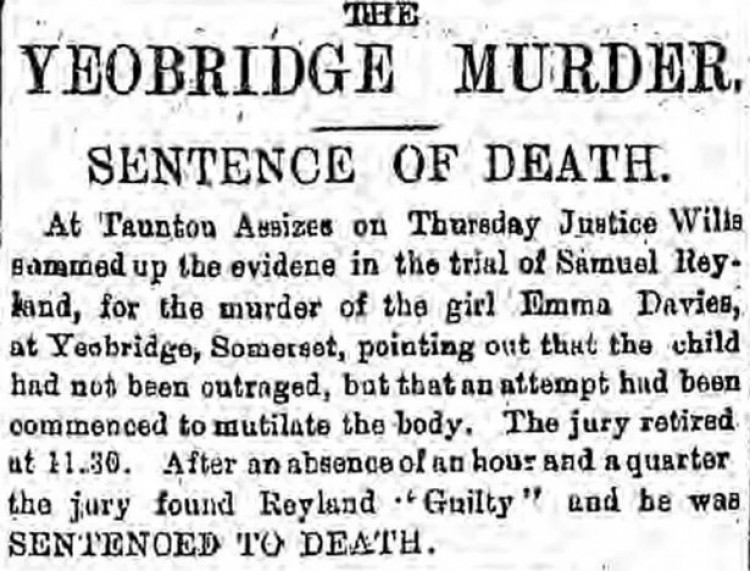
On March 13, 1889, Samuel Reyland was executed at the age of 23 for a horrific crime: the murder of 10-year-old Emma Jane Davies.
The tragic event took place at Yeobridge, Somerset on January 2, 1889. Emma was found lifeless in a ditch, her legs grotesquely positioned in the air, and her head sunk into the mud.
Evidence of a brutal struggle was clear, with a cord wrapped tightly around her throat, which had also been slashed. Deep gashes marred her lower back, and a cut was found on her lower body.
Contemporary news reports speculated that the killer had been motivated by a perverse desire to replicate the infamous "London tragedies."
In a heart-wrenching confession letter to his parents, Reyland attempted to explain the inexplicable: "I had something in my head for days after I received a blow from a lump of coal while I was in Cardiff. I cannot tell what possessed me to do it else… I took the old razor from the drawer upstairs; perhaps you did not know it was there. I was going to do for myself before I met this poor girl; but I hope they will forgive me."
His words were a bleak testament to a mind tormented by guilt and confusion, offering no real consolation for a crime that shocked the community.
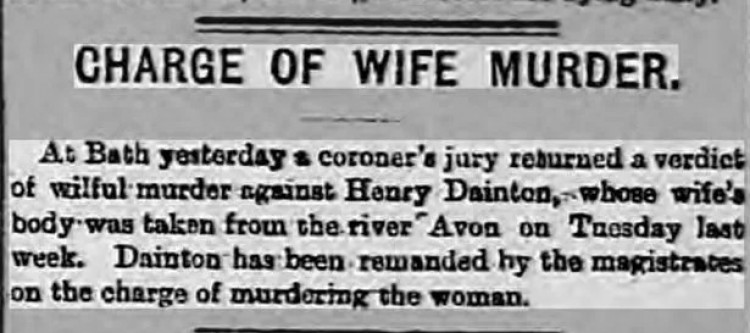
On December 15, 1891, Henry Dainton met his fate at the gallows for the cold-blooded killing of his wife.
Her lifeless body was discovered grisly, half-submerged in the River Avon, with her head resting on the bank and the rest of her body under the water. The events leading to this tragedy unfolded earlier that night, as the court was informed that Dainton and his wife had been indulging in drinks at a pub near Saw Close, engaging in a heated argument.
In a fit of anger, the woman left the pub, with Dainton hot on her heels. Suspicion was cast on him when he was apprehended by the police, his boots and stockings tellingly soaked.
A witness residing on Lower Bristol Road added a chilling piece to the puzzle. He recounted to the police how he had heard a woman's desperate plea, crying, "Don't, Harry! Let me get out!" He had run towards the scream, catching sight of a man fleeing the scene, whom he pursued.
Dainton's last moments were filled with a plea for divine forgiveness, crying out, "Oh Lord Jesus, have mercy," as the executioner's sentence was fulfilled.
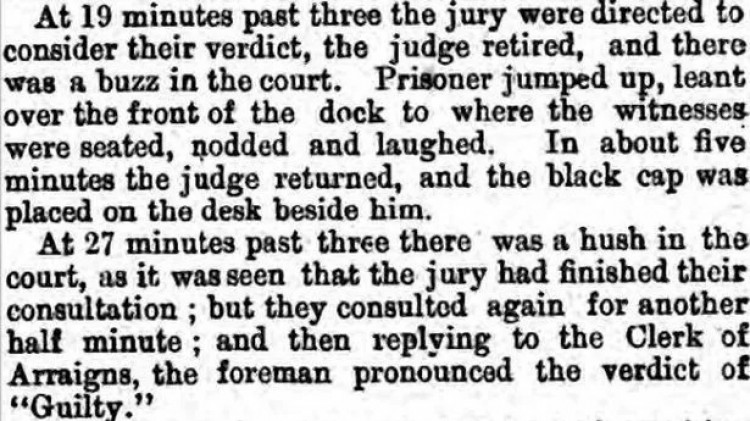
On August 10, 1893, Charles Squires faced his ultimate punishment for the heinous act of smothering his wife's two-year-old son.
Residing in Somerton and married for just over a year, Squires and his wife were known to quarrel frequently over the child. Squires had a reputation for being abusive towards the little boy, often beating and threatening him.
The tragic incident occurred on April 30. That night, the child was tucked into bed but began to cry at 12:30 pm. When his wife attempted to attend to the crying child, Squires forbade her, even threatening to break her neck if she tried to approach him. Instead, he took it upon himself to go to the child, who was found lifeless the next morning.
The signs of violence were all too clear: dark bruises marked the child's cheeks, his nose was flattened, and a medical examination confirmed the grim reality that the child had been strangled. The evidence was damning, leading to Squires' conviction and subsequent execution.
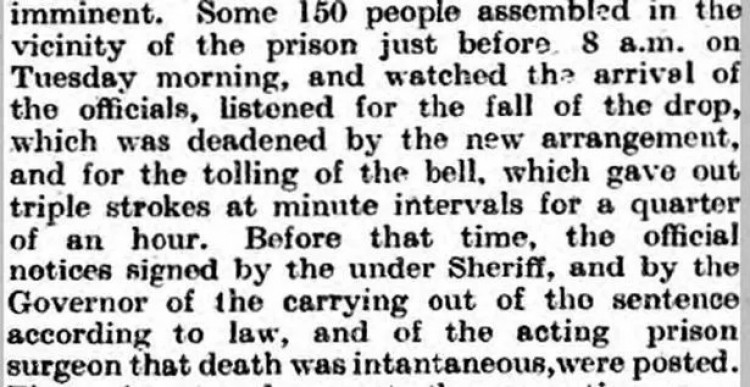
On November 10, 1914, the execution of Henry Quarterly attracted the attention of 150 onlookers, all gathered to witness his fate for the crime of murdering his neighbor.
A 55-year-old builder hailing from Porlock, Quarterly's target was a fish hawker and fruiterer. The incident occurred shortly after the victim, Pugsley, had stabled his horse. A gunshot to the back sent Pugsley tumbling to the ground, fatally wounded. As his wife hurried to his aid, he succumbed to his injury, and a second shot echoed through the air.
Police Constable Greedy immediately made his way to Quarterly's residence, discovering him in an upstairs nook, armed with the smoking gun. Signs of a scuffle were evident: a grazing wound on Quarterly's cheek and a stray bullet lodged in the ceiling.
Unrepentant, Quarterly's defiant words were captured by the press of the time: "I don't care a ------- that I killed him," he declared. "I shot him, that is straight, that is the truth, so there is an end of it."
The solemn task of conducting Quarterly's hanging fell to Thomas Pierrepoint.
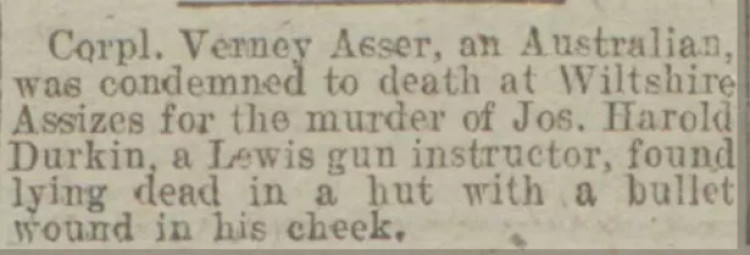
Verney Asser, an Australian serviceman, met his fate on March 5, 1918, through hanging for the murder of his comrade-in-arms.
Stationed at Sutton Veney during the tumultuous times of World War I, Asser took the life of Acting Corporal Joseph Durkin, a fellow soldier. He fired a fatal shot at Durkin, the bullet finding its target in the left cheek. The trial for this grievous act took place in Devizes, Wiltshire, in January 1918, culminating in Asser's execution by John Ellis, with assistance from William Willis.
Durkin's body was discovered in his sleeping quarters, a rifle ominously positioned beside him. The tragic event was believed to have been precipitated by a disagreement between the two soldiers concerning women.
The execution itself was chillingly swift: a mere 35 seconds passed from the moment Asser stepped out of his cell to his life's end, following a drop of six feet and 10 inches.
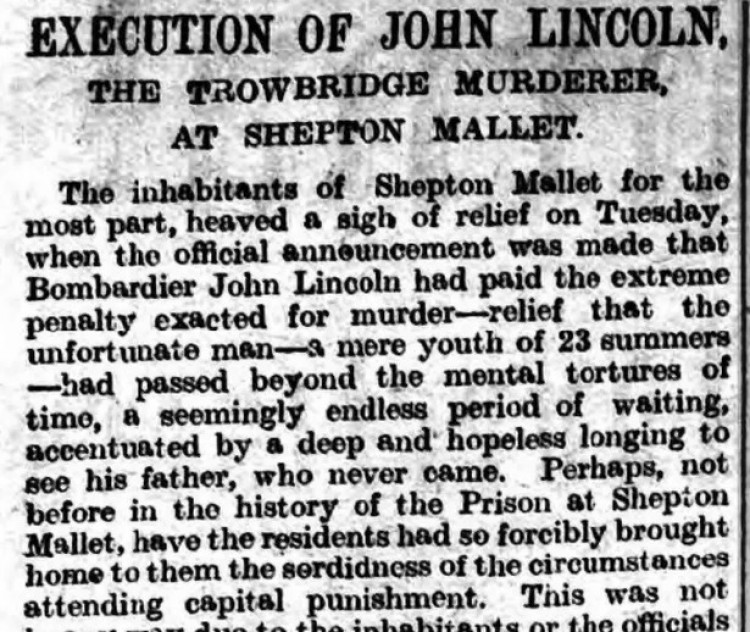
Robert Baxter hanged William Bignall on the morning of Tuesday, February 24, 1925 for the murder of his girlfriend Margaret Legg.
Ms Legg was found lying in a field near Tetbury Station with her throat cut, her body found by her husband who was on his way back from his allotment.
Police soon ascertained she had left her home after packing her belongings, leaving with another man.
Bignall spent his final day singing hymns and playing a game called Rings.
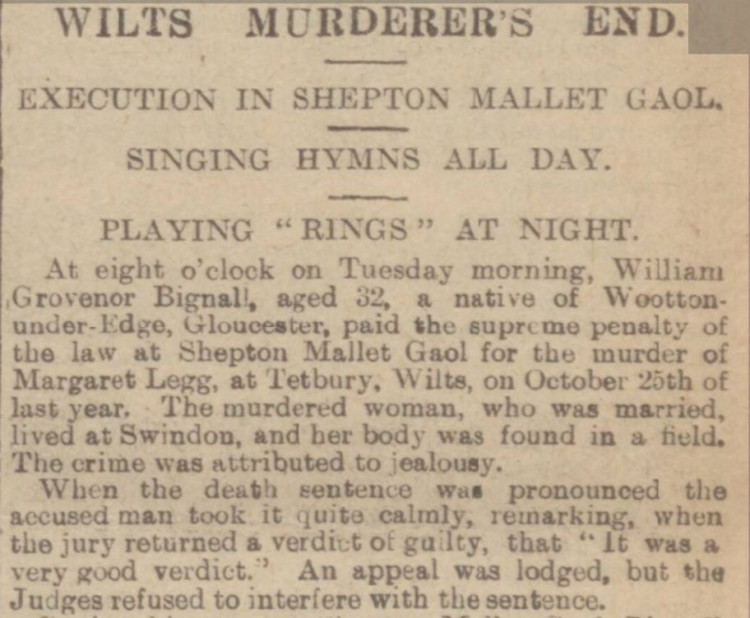
On the morning of Tuesday, February 24, 1925, William Bignall was executed by hanging, as punishment for the murder of Margaret Legg, his girlfriend.
Margaret Legg's lifeless body was discovered near Tetbury Station, her throat savagely slit. The grim discovery was made by her husband while he was returning from his allotment.
Investigators quickly determined that she had departed from her home after gathering her possessions, evidently leaving in the company of another man.
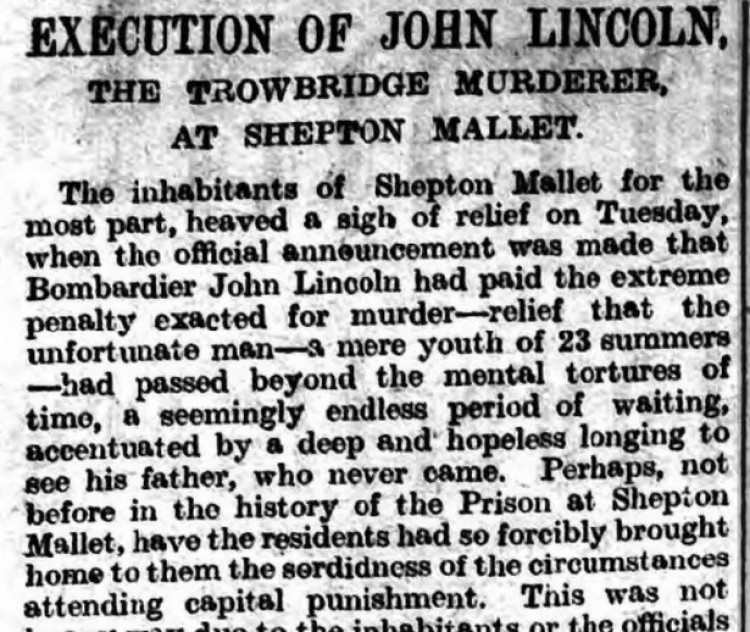
On March 2, 1926, John Lincoln met his end at Shepton Mallet, becoming the last civilian to be executed there.
He was only 23 when he faced his final punishment at the prison, marking the last civilian execution.
His crime was the murder of Edward Richards, who had been assaulted and fatally shot in the wee hours of Christmas Day, 1925, in Trowbridge.
Lincoln, who served as a bombardier, was one of two individuals apprehended for this heinous act. His case garnered national press coverage due to his familial connections; he was the offspring of MP and spy Ignatius Timothy Trebitsch-Lincoln, a Hungarian rogue and known fraudster.
The victim, Richards, was discovered by his landlord, suffering from a head injury and stomach pains, and informed the police that he had come home to find two intruders.
During the trial, Lincoln revealed that the plan to rob Richards' home had been his companion's idea, and that they had consumed rum to bolster their courage. Upon their intrusion, Richards had come home and fired at them.
In response, Lincoln had rushed to the front entrance of the dwelling, discharging his weapon through a crevice in the door on three occasions before finally striking Richards over the head with a beer bottle.
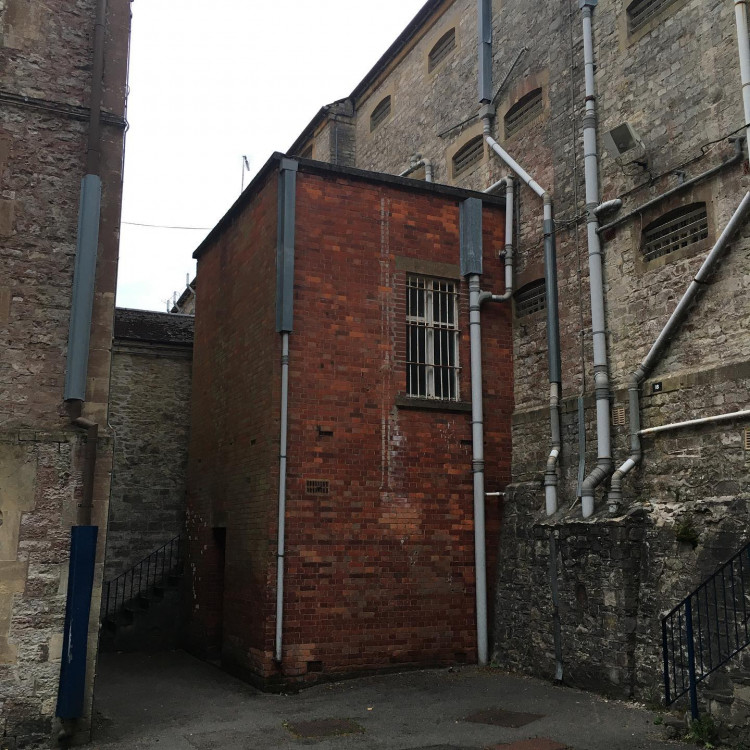
These men, each with their own dark tale, found their final rest in unmarked graves within the prison's walls, customary following British executions.
Their stories continue to stir curiosity and debate, serving as poignant reminders of a time when justice was delivered at the end of a rope. Shepton Mallet's complex history, filled with grisly discoveries and grim punishment, forever echoes with these chilling tales.

The prison's legacy, still imbued with the ghosts of its past, keeps these stories alive, allowing us to explore the depths of human nature and our justice system.
CHECK OUT OUR Jobs Section HERE!
Shepton Mallet vacancies updated hourly!
Click here to see more: Shepton Mallet jobs
Share:








